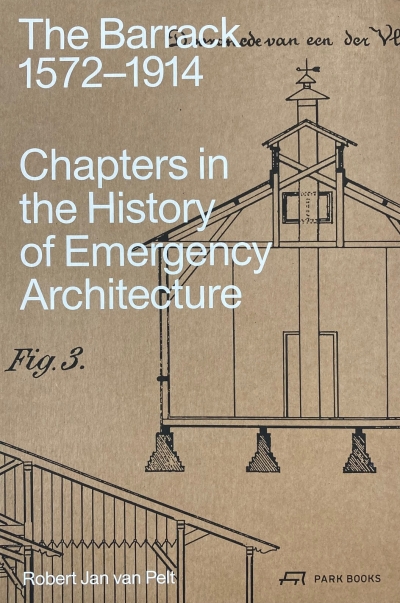
The Barrack. 1572-1914. Chapters in the History of Emergency Architecture
The Barrack, 1572–1914 tells the little-known history of a building type that many people used to register as an alien interloper in conventionally built-up areas. The barrack is a mostly lightweight construction, a hybrid between shack, tent, and traditional building. It is a highly efficient structure that sometimes also proves to be extremely durable. Easy to erect and to take down, it is—after the introduction of railways and later motor vehicles in the late 19th and early 20th centuries—also easy to transplant from one location to another. Originating as a standardized accommodation in the late 16th century, the barrack became a mass-produced utility of military and civilian mobilization in the 19th century, providing immediate shelter for soldiers as well as for displaced persons, disaster victims, or prisoners. The barrack played a decisive role in shaping the political space of modernity.
Robert Jan van Pelt traces nearly 350 years of barrack history up to 1914. That year, in which the Great War broke out, proved to be a turning point in the perception of the barrack, away from pragmatic emergency shelter and towards sinister forced housing. Richly illustrated with some 250 images, van Pelt’s book records the traditions of barrack design and the technological inventiveness that went into it in the late 19th century.